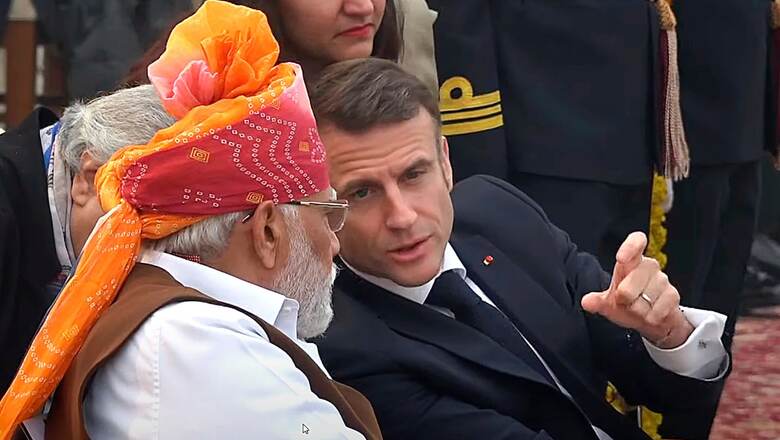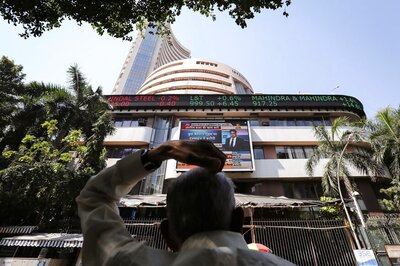
views
As French President Emmanuel Macron’s India tour as the Republic Day guest of honour came to an end, discussion on cooperation in defence, space and civil nuclear aspects emerged as a key highlight of the meetings. Of these, talks on small modular reactors (SMRs) have proved to be of particular interest as India pivots its civil nuclear power strategy toward SMRs. This comes as Prime Minister Narendra Modi commits the country towards reducing reliance on coal for its power generation.
Notably, the two leaders discussed the Jaitapur nuclear power project which has faced delays since 2018. They also appreciated Electricite de France’s (EDF), the French state-owned electric utility company, proposal to train Indian nuclear engineers and technicians for deployment in projects involving European Pressurised Reactors.
India is working towards a strategy to proliferate small nuclear power plants across the country. With a goal to swiftly increase its reliance on nuclear energy in the next decade, India aims to address both decarbonisation and the escalating demand for power. Currently, nuclear plants contribute to less than 2% of India’s annual electricity generation.
France is a leading power in civilian nuclear energy. France relies on nuclear reactors to produce 65% to 70% of its electricity, representing the highest proportion of nuclear generation worldwide. This historical reliance on nuclear power has allowed France to export excess clean energy to neighbouring countries during periods of increased demand.
Pivoting Towards Nuclear
As the world’s most populous country with over 1.4 billion people, India’s energy demands are soaring at an accelerated pace. At the same time, global awareness about climate change have mobilised the world into a mission to reduce carbon emissions drastically. India has heeded this call and aims to reach net zero emissions by 2070 and to meet 50% of its electricity requirements from renewable energy sources by 2030.
To this end, India has made a plethora of moves and developed various projects and mega projects to tap into the country’s renewable energy resources, which has led to greater contribution of solar, wind and hydro towards India’s power needs.
As fossil fuel forms the source of 56% of India’s power and renewables like solar, wind and hydro account for about 40%, nuclear stands at less than 2%. Contrast this with France, 65-70% of whose power comes from nuclear, which helped that nation avert a larger energy crisis in the wake of the Russia-Ukraine war.
India is yet to expand on nuclear energy, one of the most reliable sources that can churn out power regardless of weather conditions. In the past, reasons like safety fears, huge construction cost, limited uranium reserves in the country and curbs on nuclear fuel acquisition stifled the growth of India’s civil nuclear programme.
However, India is not only well placed to make significant investments and implement advanced and dependable state-of-the-art technologies, but also freely acquire nuclear fuel since 2008 when the NSG, which India is not a member of, lifted nuclear trade sanctions against India imposed in 1974. India’s civil nuclear programme is poised for take-off if concerns about cost-effectiveness and disputes on liability issues are addressed.
India’s civil nuclear programme has significant potential. The country may have limited reserves of uranium, but it has the largest reserves of thorium in the world — an element that can be converted to uranium and used in a reactor.
At this point, as the world overlooks thorium as an alternative to uranium, India is single-handedly developing technologies to build thorium-based nuclear reactors which in foresight will prove to be a long-term game-changer for India.
India-France Nuclear Cooperation
India and France share a solid history of nuclear collaboration, which began in 2008 with the signing of the India-France Civil Nuclear Agreement, which was significant as it ended India’s isolation from the international nuclear market after nearly three decades and access nuclear technology from France, a leading nuclear power.
The agreement committed France to provide India with nuclear fuel, reactors, and associated equipment for civilian purposes. It also opened the gates for French companies to participate in India’s civil nuclear endeavours.
In 2018, with PM Modi and President Macron at the helm, the two countries signed a pact on the development of six nuclear reactors at Jaitapur in Maharashtra’s Ratnagiri district. If constructed, the Jaitapur nuclear facility would hold the title of the world’s largest nuclear power generation facility in terms of net generation capacity, reaching 9,900 MW. However, owing to differences in liability laws in the two countries and other issues, the project has encountered delays.
In Macron’s visit this month, the two sides discussed progress on financing mechanism and the localisation component of the project.
Small Modular Reactors: A Game Changer?
In light of this, India has is leaning toward the prospect of developing small modular reactors or SMRs. SMRs represent an emerging technology advanced nuclear reactors with a capacity of up to 300 MW(e) per unit, approximately one-third of traditional reactors. Capable of producing substantial low-carbon electricity, are characterised by their small physical size, modular design for factory assembly and transport, and the use of nuclear fission to generate heat for energy production.
SMRs are localised, cost effective and bypass the risk of devastating accidents as they are meant to provide power in scenarios where extensively large facilities are unnecessary or locations lack the infrastructure to accommodate sizable units, such instances encompass smaller electrical markets, isolated areas, modest grids, sites with restricted water and land availability, or distinctive industrial applications.
Limited grid coverage and the high costs of rural electrification pose challenges to expanding energy access. To address this, small modular reactors (SMRs) with their smaller electrical output can be integrated into existing grids or deployed off-grid in areas lacking sufficient transmission infrastructure. This offers a low-carbon power solution for industry and local populations, ensuring that a single power plant does not exceed 10% of the total installed grid capacity.
Due to their compact size, simplicity, and advanced technology, small modular reactors (SMRs) offer enhanced safety and reduced fuel demands. SMR-based power plants may need less frequent refuelling, occurring every three to seven years, in contrast to the one to two years typical for conventional plants. Certain SMRs are designed to operate for extended periods, up to 30 years, without requiring refuelling.
Over 80 commercial small modular reactor (SMR) designs are currently in development worldwide. Despite the nascent nature of the concept, the global community is progressing with SMRs. Projects are either under construction or in the licensing stage in various countries, including Argentina, Canada, China, Russia, South Korea, and the United States of America, showcasing the international momentum behind the development of small modular reactors.
India seeks to ensure that it is not left behind in this aspect, and has its own SMR technologies in the development phase. The Indian government is considering implementing incentives, resembling a production-linked incentive (PLI) scheme, to encourage the production of small modular reactors (SMRs) and increase the share of nuclear power in the country’s energy mix. This move aims to attract private investments, scale up production, and reduce costs.
Bilateral talks with France, Russia, South Korea, and the United States are ongoing to secure technologies and investments for SMRs. Meanwhile, the Atomic Energy Act, 1962, is being re-examined to facilitate private sector and startup participation in advancing SMR technology within the country.
Apart from France, powers like the US and Russia have also offered to build SMRs with India. S Jaishankar’s visit to Russia last month entailed the discussion on nuclear energy particularly the development of the Kudankulam nuclear power project. Small modular reactors were also discussed. Similarly, during PM Modi’s state visit to the United States, nuclear cooperation and SMRs were discussed in detail. This reflects India’s burgeoning international clout in the civil nuclear energy sector.



















Comments
0 comment